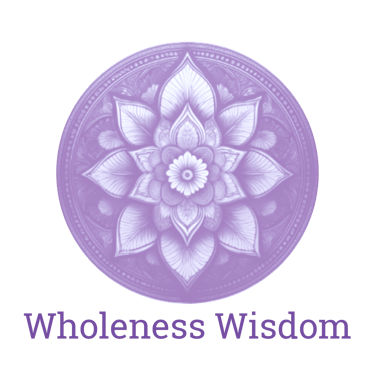The Journey to Self-Realization: Cultivating a Balanced Routine
Creating a Framework for Authentic Living
10/31/20245 min read
In our fast-paced world, the quest for self-realization can often feel like an elusive goal. Caught up in the daily grind, we might prioritize to-do lists and responsibilities while our deeper aspirations take a backseat.
However, the path to self-actualization— a state where we stand in our wholeness and live authentically —can be natural with a balanced routine.
Participating In Our Natural Way
According to ancient masters who have attained self realization there are four pathways to spiritual evolution.
Depending on which path aligns with us, we each live it uniquely based on lifestyle and values. Wholeness Work is a stress relief and self-actualization method that is built on the path of wisdom.
The other paths of surrender, service, and meditation can be built into our daily routine as part of a natural self-realization. For some, guiding themselves in Wholeness is very challenging. For them another path may be more natural. Here are some ways to incorporate any spiritual path into our daily routine.
The Four Paths To Realization or Awakening
In the journey of self actualization some people are drawn to the way of Bhakti, which is the path of surrender. Some even consider this the easiest path to master.
On the path of surrender, devotees use prayer to connect to a greater intelligence. There is love for this intelligence. It is a heartful, embracing path. However, this is not the way for all people. On the path of Raja, people use yoga and meditative activities.
According to Eastern tradition the paths are:
The Devotion Path (Bhakti)
The Service Path (Karma)
The Meditation Path (Raja)
The Wisdom or Knowledge Path (Jnana)
Even when we do not know that we choose a path of self actualization, just being human gives a natural inclination to one of these. This is why for some people, meditation is not appealing but prayer is. Perhaps for you being of service is the easiest path out of ego, and some gravitate toward this. For others hearing and contemplating wisdom teachings is the path to their personal freedom.






The Power of a Balanced Routine
Once on the path of realization we may find ourselves asking: How do I plan my life? A balanced routine is not just about managing time; it’s about creating a framework that supports your inner work. This becomes easy once we identify what path aligns with us. Our personal tendencies show us how to build a routine that fosters balance even when the pace of the world is moving quickly around us.
Ask, ‘What is my path?’
You know yourself best. If you know that being in nature enhances your sense of connectedness, consider how often this is possible. Beware of unrealistic expectations. Walking meditation which allows inwardness, while service is an extension. If service has a draw for you, reaching out to someone to connect in person or over the phone is an easy way to be of service into daily life. Being available to hear, see and welcome another person exactly as they are is a high and simple form of service. Yoga Asanas are an aspect of the Raja (or ‘Royal’) path, and classes are highly available.
1. Identify your path
2. Pick one or two ways of being active in it
3. Look at your weekly schedule and implement these activities where it is possible
Incorporating Reflection
When we regularly schedule moments for reflection we can access the unconscious parts of ourselves that are struggling in certain areas. Simple actions such as journaling or contemplation can direct attention to these areas so you can recalibrate as needed. One journal prompt is to write a list of values. This can make morning intention an easy addition to your routine.
An easy contemplation exercise is to sit down in a quiet space for 20 minutes and contemplate a single value.
Allow For Flexibility
While routines provide structure, they should also allow for spontaneity and adaptation. Life is dynamic, and your routine should reflect that. If you are not a morning person see where you can implement an evening walk or guided meditation. If you find you are most energized before the work day begins, set aside time in the morning for brainstorming how to be of service to others throughout the day.


Include Self-Care
Self improvement can easily become a striving ego-pursuit. We may find we are substituting spiritual activity for whatever material attainment we had been focused on before. By dedicating time to care for our feelings and bodies we cultivate an environment for inner growth to naturally take place. When we forfeit our needs for more future-focused objects of attention we forget that the peace that is wanted is always in the now. Mindfulness practices are ways of returning to the present moment and taking inventory of the body’s needs. If there is thirst, we need to know of the thirst before we can drink. (Here's an article I wrote on How To Implement Mindfulness Into Daily Life)
Beware Of Spiritual Bypassing
In the business of building a routine in sync with your journey of self realization, do not make the mistake of ignoring the body and mind’s needs. Build into your routine ample rest, play, and time that is unscheduled. Self care includes leaving open areas in your schedule. These are open in order to meet the needs of the moment, whatever they may be.
By weaving these practices and activities into your daily and weekly routine, you create an environment that allows self-discovery and actualization to unfold.
Setting Intentions
Routines help us commit by using structure to follow through consistently. The morning and the evening are important. Each day should begin with a clear acknowledgment of your commitment to inner growth. Alignment with values guides our actions and decisions throughout the day, and we must connect to them after awakening. We do not need to spend a lot of time setting intentions, but we do need to find something we can be consistent with to start the routine.
After you say a morning prayer, making the bed can be a continuation of devotion (Bhakti). Simply naming some values (Jnana) is a way to direct attention to what is really important. Implement a few minutes to connect to yourself without any stimulus before going to bed, in a way that is consistent and natural for you.
" We do not need to spend a lot of time
setting intentions in the morning,
...but we do need to find something we can be consistent with to start the routine. "




Through my experience of striving and then realizing my natural wholeness, I know it’s never too late to have a happy life.
This is available to anyone who has had enough time on the treadmill of seeking and is ready to take the next step on the path of balance and peace.




